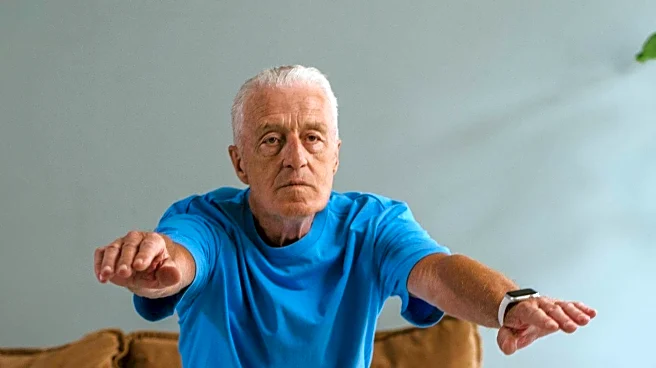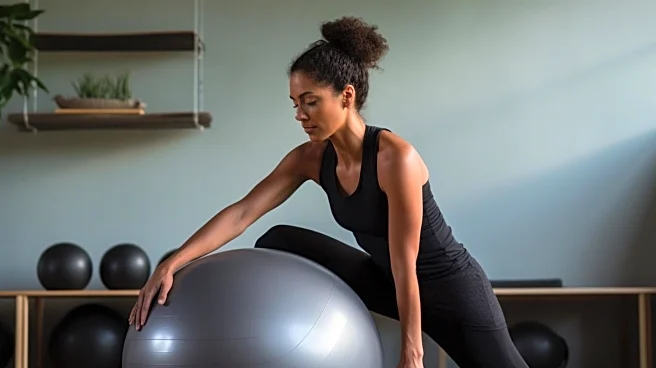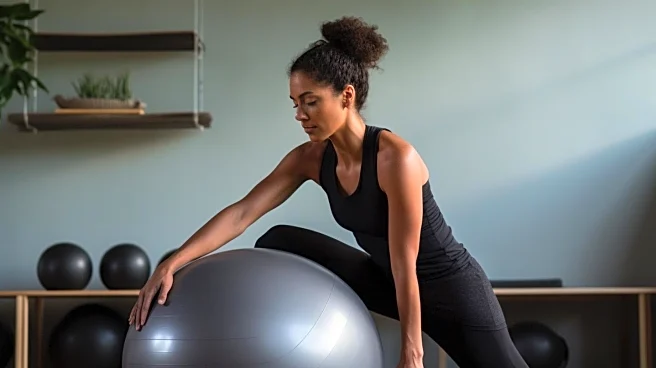What's Happening?
Joe Williams, a trainer and studio manager at F45 and FS8 Oxford Circus, emphasizes the importance of incorporating exercises that engage all three planes of motion—frontal, sagittal, and transverse—to enhance longevity and mobility. Williams suggests that most people primarily move in the sagittal plane, which includes forward and backward movements like walking and running, often neglecting side-to-side and rotational movements. This neglect can lead to weaknesses and imbalances affecting overall strength and mobility. To counteract this, Williams recommends six exercises: bodyweight squats, single-leg deadlifts, lateral lunges, suspension trainer inverted rows, push-ups, and kneeling wood chops. These exercises are designed to build strength, improve flexibility, and maintain mobility, which are crucial as individuals age.
Why It's Important?
The emphasis on diverse movement patterns is significant for maintaining physical health and independence as people age. By engaging in exercises that target different planes of motion, individuals can prevent muscle loss and improve their overall strength and mobility. This approach not only aids in physical fitness but also supports the ability to perform daily activities independently, reducing the risk of falls and injuries. As the population ages, maintaining mobility becomes increasingly important for quality of life, making these exercises valuable for long-term health and wellness.
What's Next?
Individuals interested in improving their longevity and mobility can incorporate these exercises into their regular workout routines. Fitness trainers and health professionals may begin to emphasize the importance of multi-planar exercises in their programs, potentially leading to a shift in how fitness is approached for older adults. As awareness grows, gyms and fitness centers might offer specialized classes focusing on these exercises, catering to the needs of an aging population.
Beyond the Headlines
The focus on multi-planar exercises highlights a broader trend in fitness towards functional movements that mimic real-life activities. This approach not only benefits physical health but also supports mental well-being by encouraging active engagement and concentration during workouts. As fitness evolves, there may be increased interest in exercises that offer holistic benefits, integrating physical, mental, and emotional health.









